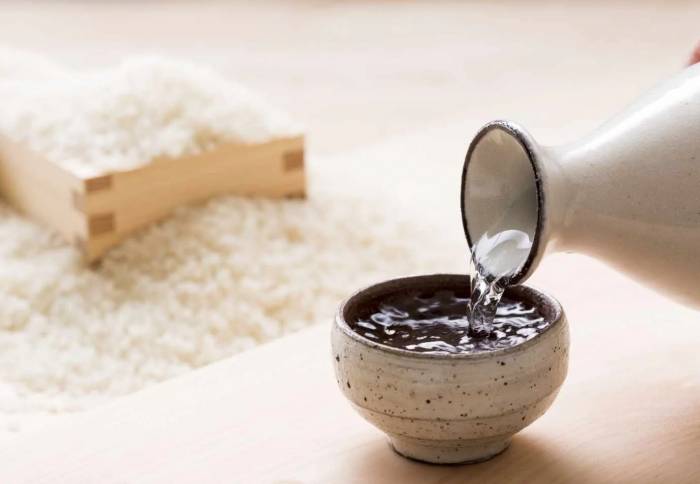American sake gains momentum as southern rice fields fuel a new wave of craft brewing
Local brewers blend Japanese tradition with regional ingredients, expanding sake’s reach beyond Japanese restaurants and into mainstream American culture
2025-08-22

In recent years, American sake has emerged as a new force in the country’s beverage scene, with roots stretching deep into the Southern rice fields. Historically, rice cultivation in the South was tied to enslaved labor before the Civil War, and today, Arkansas stands as the leading rice-producing state in the United States. Now, this staple crop is being transformed into sake by a new generation of brewers who are drawing on both local resources and Japanese tradition.
Ben Bell, founder of Origami Sake in Hot Springs, Arkansas, recalls his first encounter with sake while working at a wine shop in Little Rock. The experience led him to Japan, where he trained at Nanbu Bijin and earned advanced certifications from the Sake Education Council. After working as an importer in New York, Bell returned to Arkansas with a vision: to make world-class sake using local rice and water.
Origami Sake opened its doors in 2022. The brewery sources Yamada Nishiki rice—considered the gold standard for sake—from nearby Isbell Farms, one of only two U.S. farms growing this variety. Origami also uses Omachi and Somai rice from local producers. The water comes from the Ouachita Mountain aquifer, prized for its purity and ideal mineral content for brewing. Bell’s goal is to see sake become a fixture on Southern restaurant menus and for Arkansans to take pride in their rice heritage.
The rise of American sake is not limited to Arkansas. Across the country, breweries are experimenting with local ingredients and techniques. In Brooklyn, Bin Bin Sake boutique co-founder George Padilla notes that most customers are new to sake and eager to learn through tasting. He stocks domestic brands like Brooklyn Kura and Kato Sake Works alongside Dassai Blue, an American outpost of Japan’s renowned Dassai brewery.
Brooklyn Kura uses California-grown rice and Catskill Mountains water to produce small-batch sakes with crisp, floral profiles. Padilla sees parallels between the current state of American sake and the early days of Napa Valley wine: both required building a reputation from scratch. He observes that more sommeliers are adding sake to non-Japanese restaurant menus, though consumer demand is still developing.
The pandemic played a role in expanding interest in sake as Americans explored new beverages at home. Eric Crane, training director at Empire Distributors, says that while sommeliers have long appreciated sake, it is only recently appearing more widely in retail and restaurants outside Japanese cuisine. He points out that education remains key for broader acceptance.
American fascination with Japanese culture has also contributed to sake’s growing popularity. Increased tourism to Japan and exposure to Japanese food, media, and pop culture have made sake more familiar to U.S. consumers. Educational programs like those offered by WSET and Brooklyn Kura’s Sake Studies Center are helping demystify the drink.
Japanese producers are taking notice of this trend. Dassai Blue’s facility in upstate New York marks a significant investment by a major Japanese brand in American production. Other breweries are emerging nationwide: Sequoia Sake in San Francisco uses Northern California water and organic rice; North American Sake Brewery operates alongside a ramen bar in Virginia; Arizona Sake incorporates wild-harvested Navajo tea for a regional twist.
Unlike Japan, where strict regulations govern what can be labeled as sake, American brewers operate with fewer restrictions. This freedom allows for innovation but also places responsibility on producers to maintain quality and respect tradition. Bell acknowledges this challenge, emphasizing the need for self-regulation and cultural sensitivity as American brewers define their own approach.
As rice continues to shape Southern agriculture and identity, its role in fermentation is expanding beyond traditional boundaries. Whether paired with steak or tacos or enjoyed on its own, American-made sake is carving out a place on tables across the country—reflecting both local character and global influence.
Founded in 2007, Vinetur® is a registered trademark of VGSC S.L. with a long history in the wine industry.
VGSC, S.L. with VAT number B70255591 is a spanish company legally registered in the Commercial Register of the city of Santiago de Compostela, with registration number: Bulletin 181, Reference 356049 in Volume 13, Page 107, Section 6, Sheet 45028, Entry 2.
Email: [email protected]
Headquarters and offices located in Vilagarcia de Arousa, Spain.